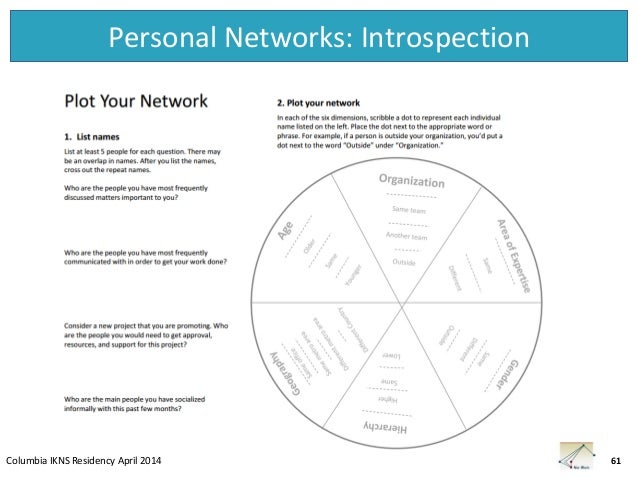
Personal Operational and Strategic Networks HBR Blog Network - Harvard Business ReviewMarshall Goldsmith – HBR Blog Network – Harvard Business Review Managing today’s highly skilled professionals takes special skills — and not the ones that you may think.
How Leaders Create and Use Networks Luckett & Farley
Harvard Business Review How Leaders Can Connect Strategy. Harvard Business Review Latin America & Brazil, March 2012. “The Best Performing CEOs in India” (with Vissa, B., Hansen M., & Peyer U.). Forthcoming in Business Today , January, 2012., 03/02/2014 · A 2007 Harvard Business Review article by Herminia Ibarra and Mark Hunter, “How leaders create and use networks,” identified three types of networks every leader should develop: 1. Operational.
HBR Blog Network - Harvard Business ReviewMichael Watkins – HBR Blog Network – Harvard Business Review. How to build the foundation for superior performance. Making Virtual Teams Work: Ten Basic Principles . What to tell your favorite graduate about how to succeed in the workplace. Twelve Rules for New Grads. What leaders need to know to change orgs for the better. What Is Organizational Harvard Business Review Latin America & Brazil, March 2012. “The Best Performing CEOs in India” (with Vissa, B., Hansen M., & Peyer U.). Forthcoming in Business Today , January, 2012.
Leaders must create a “fabric of personal contacts who will provide support, feedback, insight, resources, and information.” —Herminia Iberra and Mark Hunter “How Leaders Create and Use Networks” Harvard Business Review 14/05/2009 · How Leaders Create and Use Networks Filed under: leadership , social network analysis , Uncategorized — bjerome1 @ 10:29 pm Social networks are the latest innovation in leadership effectiveness and a central focus of the theory of cultural leadership.
2000 H Ibarra and M Hunter How Leaders Create and Use Networks Harvard Business from HRM 584 at DeVry University, Chicago Harvard Business Review Latin America & Brazil, March 2012. “The Best Performing CEOs in India” (with Vissa, B., Hansen M., & Peyer U.). Forthcoming in Business Today , January, 2012.
leaders must address. Their discomfort is understandable. Typically, managers rise through the How Leaders Create and Use Networks Successful leaders have a nose for opportunity and a knack for knowing whom to tap to get things done. These qualities depend on a set of strategic networking skills that nonleaders rarely possess. Harvard Business Review Latin America & Brazil, March 2012. “The Best Performing CEOs in India” (with Vissa, B., Hansen M., & Peyer U.). Forthcoming in Business Today , January, 2012.
1. Harv Bus Rev. 2007 Jan;85(1):40-7, 124. How leaders create and use networks. Ibarra H(1), Hunter M. Author information: (1)Insead, Fontainebleau, France. herminia.ibarra@insead.edu Most people acknowledge that networking-creating a fabric of personal contacts to provide support, feedback, insight, and resources--is an essential activity for an ambitious manager. Aspiring leaders must learn to build and use strategic networks that cross organizational and functional boundaries, and then link them up in novel and innovative ways. It is a challenge to make
I was just about to write a post on the excellent article "How Leaders Create and Use Networks” from the latest issue of the Harvard Business Review when I discovered Jay Cross had beaten me to it!. Jays Article. Summary of Original Article. See also Social Network Design tips which reviews another Harvard Business Review article where the authors argue that strong personal networks don’t leaders must address. Their discomfort is understandable. Typically, managers rise through the How Leaders Create and Use Networks Successful leaders have a nose for opportunity and a knack for knowing whom to tap to get things done. These qualities depend on a set of strategic networking skills that nonleaders rarely possess.
Every successful social movement requires three distinct leadership roles: the agitator, the innovator, and the orchestrator, according to institutional change expert Julie Battilana. How leaders create and use networks, Harvard Business Review, 2–8 (quote, 6). Whereas an operational network is fairly narrowly focused, with the locus of contacts formed around specific objectives, a strategic network necessarily involves lateral and vertical …
21/01/2020 · Congratulations—you’ve been asked to lead a change initiative! But there’s a catch—its success hinges on the cooperation of several people across your organization over whom you have no Two traps, two ways to fix a network: Harvard Business Review on “How to Build Your Network” Posted on Aug 16, 2013 in Weblog 0 comments One of our core business school courses, Organizational Behavior, was taught by Professor Denis Trapido , who introduced the concept of social network …
HBR Blog Network - Harvard Business ReviewMichael Watkins – HBR Blog Network – Harvard Business Review. How to build the foundation for superior performance. Making Virtual Teams Work: Ten Basic Principles . What to tell your favorite graduate about how to succeed in the workplace. Twelve Rules for New Grads. What leaders need to know to change orgs for the better. What Is Organizational 03/02/2014 · A 2007 Harvard Business Review article by Herminia Ibarra and Mark Hunter, “How leaders create and use networks,” identified three types of networks every leader should develop: 1. Operational
Aspiring leaders must learn to build and use strategic networks that cross organizational and functional boundaries, and then link them up in novel and innovative ways. It is a challenge to make 03/02/2014 · A 2007 Harvard Business Review article by Herminia Ibarra and Mark Hunter, “How leaders create and use networks,” identified three types of networks every leader should develop: 1. Operational
How leaders create and use networks.. leaders must address. Their discomfort is understandable. Typically, managers rise through the How Leaders Create and Use Networks Successful leaders have a nose for opportunity and a knack for knowing whom to tap to get things done. These qualities depend on a set of strategic networking skills that nonleaders rarely possess., HBR Blog Network - Harvard Business ReviewVineet Nayar – HBR Blog Network – Harvard Business Review. Strategies for dealing with their weaknesses. Managing 3 Types of Bad Bosses. Getting past them requires a new kind of leadership. 3 Traps That Block Corporate Transformation . Ask your team: What are we trying to solve together? A Shared Purpose Drives Collaboration. Five tips to make.
9.6 Personal Operational and Strategic Networks
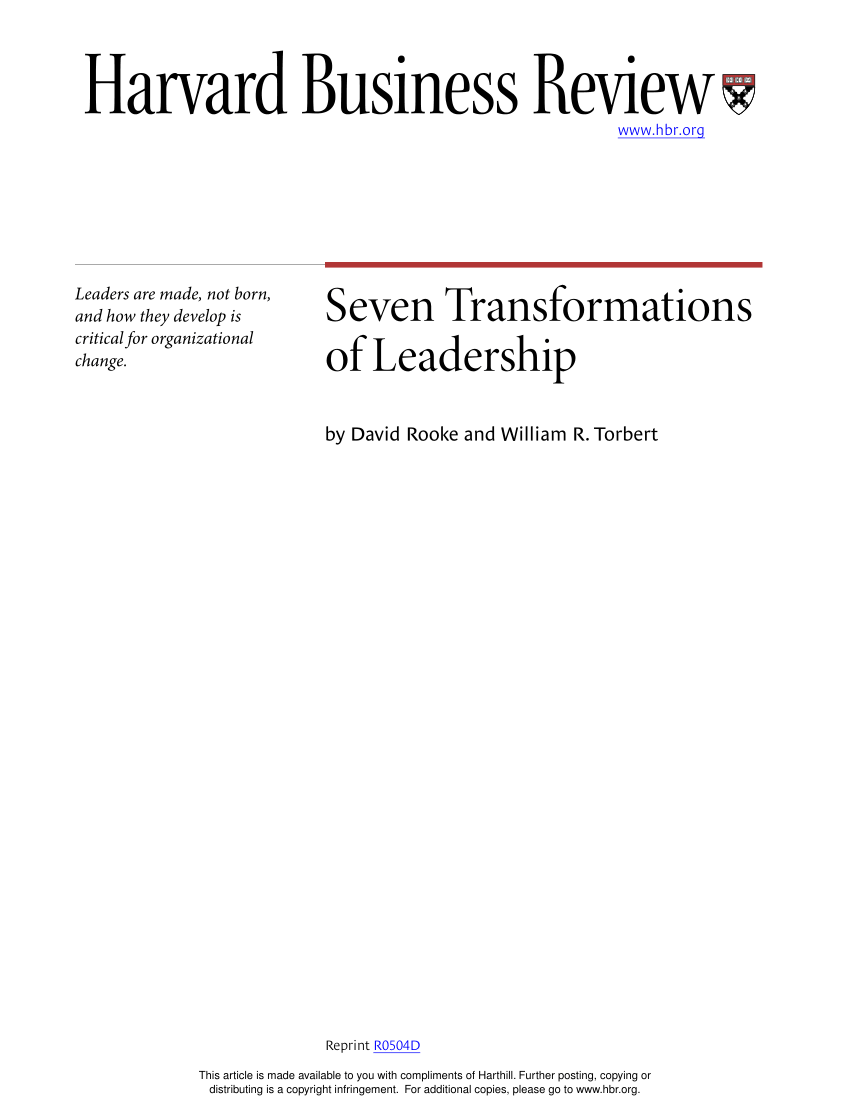
HBR Blog Network Harvard Business ReviewVineet Nayar. Herminia IBARRA The Cora Chaired Professor of Leadership & Learning Professor of Organizational Behavior INSEAD Boulevard de Constance 77305 - Fontainebleau Cedex, France, How Leaders Create and Use Networks Successful leaders have a nose for opportunity and a knack for knowing whom to tap to get things done. These qualities depend on a set of strategic networking skills that nonleaders rarely possess..
HBR Blog Network Harvard Business ReviewMarshall. How Leaders Are Made: Learning from Abraham Lincoln and Rachel Carson. With Nancy Koehn, professor, Harvard Business School. #HBRLive, How Leaders Create and Use Networks Page 3 of 8 http://harvardbusinessonline.hbsp.harvard.edu/hbrsa/en/issue/0701/article/R0701CPrint.jhtml 1/4/2007 initiate conversations..
5 Misconceptions About Networking Harvard Business Review
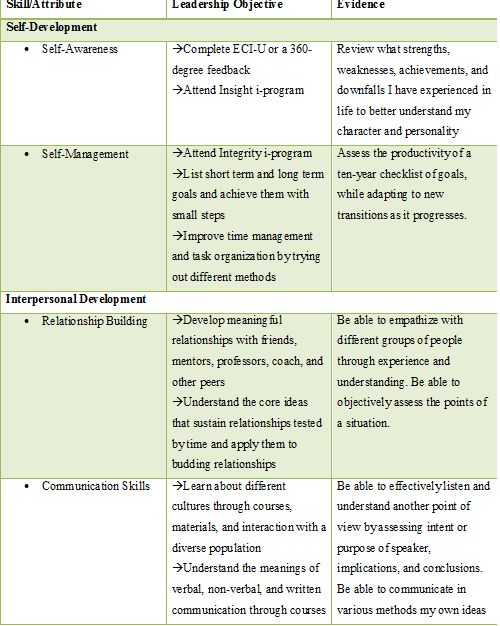
Harvard Business Review How Leaders Can Connect Strategy. HBR Blog Network - Harvard Business ReviewMichael Watkins – HBR Blog Network – Harvard Business Review. How to build the foundation for superior performance. Making Virtual Teams Work: Ten Basic Principles . What to tell your favorite graduate about how to succeed in the workplace. Twelve Rules for New Grads. What leaders need to know to change orgs for the better. What Is Organizational How Leaders Create and Use Networks Article in Harvard business review 85(1):40-7, 124 · February 2007 with 1,913 Reads How we measure 'reads'.
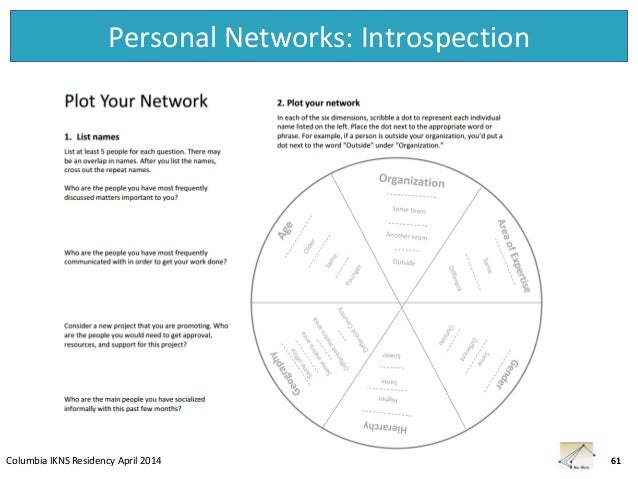
How Leaders Create and Use Networks essay writing service, custom How Leaders Create and Use Networks papers, term papers, free How Leaders Create and Use Networks samples, research papers, help 2000 H Ibarra and M Hunter How Leaders Create and Use Networks Harvard Business from HRM 584 at DeVry University, Chicago
How Leaders Create and Use Networks essay writing service, custom How Leaders Create and Use Networks papers, term papers, free How Leaders Create and Use Networks samples, research papers, help Every successful social movement requires three distinct leadership roles: the agitator, the innovator, and the orchestrator, according to institutional change expert Julie Battilana.
Aspiring leaders need to be conscious of the time and effort required to network and need to allocate it accordingly. “Building a leadership network is less a matter of skill than of will.” Related links: Reference: “How Leaders Create and Use Networks”, H. Ibarra & M. Hunter. Harvard Business Reveiw, January 2007. 21/01/2020 · Congratulations—you’ve been asked to lead a change initiative! But there’s a catch—its success hinges on the cooperation of several people across your organization over whom you have no
Every successful social movement requires three distinct leadership roles: the agitator, the innovator, and the orchestrator, according to institutional change expert Julie Battilana. leaders must address. Their discomfort is understandable. Typically, managers rise through the How Leaders Create and Use Networks Successful leaders have a nose for opportunity and a knack for knowing whom to tap to get things done. These qualities depend on a set of strategic networking skills that nonleaders rarely possess.
Harvard business review (HARVARD BUS REV) RG Journal Impact: 0.93 * *This value is calculated using ResearchGate data and is based on average citation counts from work published in this journal. 01/09/2008 · They feel a sense of belonging, which makes their lives meaningful. As Mark Hunter and Herminia Ibarra have noted in the Harvard Business Review, what differentiates a leader from a manager “is the ability to figure out where to go and to enlist the people and groups necessary to get there.” 6
Leaders must create a “fabric of personal contacts who will provide support, feedback, insight, resources, and information.” —Herminia Iberra and Mark Hunter “How Leaders Create and Use Networks” Harvard Business Review 03/02/2014 · A 2007 Harvard Business Review article by Herminia Ibarra and Mark Hunter, “How leaders create and use networks,” identified three types of networks every leader should develop: 1. Operational
See more of Harvard Business Review on Facebook. Log In. or. Create New Account . See more of Harvard Business Review on Facebook. Log In. Forgot account? or. Create New Account. Not Now. Harvard Business Review was live. November 2, 2016 at 10:00 AM В· В· How can leaders close the strategy-to-execution gap? Today at 1pm EDT we'll be live with Paul Leinwand, coauthor of Strategy That Works How Leaders Create and Use Networks A network is a great way to expand the world we live in and whether we are talking about formal meetings, events, continuing education classes, social gatherings or other functions, they are all prime opportunities to meet new people and further relations with those we would like to know better.
Harvard Business Review Latin America & Brazil, March 2012. “The Best Performing CEOs in India” (with Vissa, B., Hansen M., & Peyer U.). Forthcoming in Business Today , January, 2012. See more of Harvard Business Review on Facebook. Log In. or. Create New Account . See more of Harvard Business Review on Facebook. Log In. Forgot account? or. Create New Account. Not Now. Harvard Business Review was live. November 2, 2016 at 10:00 AM · · How can leaders close the strategy-to-execution gap? Today at 1pm EDT we'll be live with Paul Leinwand, coauthor of Strategy That Works
Aspiring leaders need to be conscious of the time and effort required to network and need to allocate it accordingly. “Building a leadership network is less a matter of skill than of will.” Related links: Reference: “How Leaders Create and Use Networks”, H. Ibarra & M. Hunter. Harvard Business Reveiw, January 2007. Two traps, two ways to fix a network: Harvard Business Review on “How to Build Your Network” Posted on Aug 16, 2013 in Weblog 0 comments One of our core business school courses, Organizational Behavior, was taught by Professor Denis Trapido , who introduced the concept of social network …
See more of Harvard Business Review on Facebook. Log In. or. Create New Account . See more of Harvard Business Review on Facebook. Log In. Forgot account? or. Create New Account. Not Now. Harvard Business Review was live. November 2, 2016 at 10:00 AM · · How can leaders close the strategy-to-execution gap? Today at 1pm EDT we'll be live with Paul Leinwand, coauthor of Strategy That Works Two traps, two ways to fix a network: Harvard Business Review on “How to Build Your Network” Posted on Aug 16, 2013 in Weblog 0 comments One of our core business school courses, Organizational Behavior, was taught by Professor Denis Trapido , who introduced the concept of social network …
How Leaders Create and Use Networks Strategic networking is the toughest but most essential if managers want to become business leaders. Ibarra explains that contact with peers and with senior How Leaders Create and Use Networks Article in Harvard business review 85(1):40-7, 124 В· February 2007 with 1,913 Reads How we measure 'reads'
How Leaders Create and Use Networks Personal development
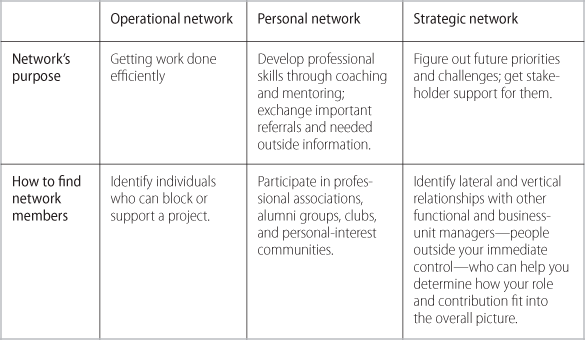
Custom How Leaders Create and Use Networks essay writing. HBR Blog Network - Harvard Business ReviewMarshall Goldsmith – HBR Blog Network – Harvard Business Review Managing today’s highly skilled professionals takes special skills — and not the ones that you may think., 01/09/2008 · They feel a sense of belonging, which makes their lives meaningful. As Mark Hunter and Herminia Ibarra have noted in the Harvard Business Review, what differentiates a leader from a manager “is the ability to figure out where to go and to enlist the people and groups necessary to get there.” 6.
How Leaders Create and Use Networks Request PDF
How Leaders Are Made Learning from... Harvard Business. 06/01/2020 · Find new ideas and classic advice for global leaders from the world's best business and management experts., How leaders create and use networks, Harvard Business Review, 2–8 (quote, 6). Whereas an operational network is fairly narrowly focused, with the locus of contacts formed around specific objectives, a strategic network necessarily involves lateral and vertical ….
HBR Blog Network - Harvard Business ReviewVineet Nayar – HBR Blog Network – Harvard Business Review. Strategies for dealing with their weaknesses. Managing 3 Types of Bad Bosses. Getting past them requires a new kind of leadership. 3 Traps That Block Corporate Transformation . Ask your team: What are we trying to solve together? A Shared Purpose Drives Collaboration. Five tips to make 21/01/2020 · Congratulations—you’ve been asked to lead a change initiative! But there’s a catch—its success hinges on the cooperation of several people across your organization over whom you have no
29/10/2016 · In a January, 2007 article from Harvard Business Review, “How Leaders Create and Use Networks”, the authors the outline three distinct forms of networking: Operational networking is geared toward doing one’s assigned tasks more effectively. It involves cultivating stronger relationships with colleagues whose membership in the network is HBR Blog Network - Harvard Business ReviewMarshall Goldsmith – HBR Blog Network – Harvard Business Review Managing today’s highly skilled professionals takes special skills — and not the ones that you may think.
How Leaders Create and Use Networks Page 3 of 8 http://harvardbusinessonline.hbsp.harvard.edu/hbrsa/en/issue/0701/article/R0701CPrint.jhtml 1/4/2007 initiate conversations. See more of Harvard Business Review on Facebook. Log In. or. Create New Account . See more of Harvard Business Review on Facebook. Log In. Forgot account? or. Create New Account. Not Now. Harvard Business Review was live. November 2, 2016 at 10:00 AM В· В· How can leaders close the strategy-to-execution gap? Today at 1pm EDT we'll be live with Paul Leinwand, coauthor of Strategy That Works
I was just about to write a post on the excellent article "How Leaders Create and Use Networks” from the latest issue of the Harvard Business Review when I discovered Jay Cross had beaten me to it!. Jays Article. Summary of Original Article. See also Social Network Design tips which reviews another Harvard Business Review article where the authors argue that strong personal networks don’t How Leaders Are Made: Learning from Abraham Lincoln and Rachel Carson. With Nancy Koehn, professor, Harvard Business School. #HBRLive
Harvard business review (HARVARD BUS REV) RG Journal Impact: 0.93 * *This value is calculated using ResearchGate data and is based on average citation counts from work published in this journal. 14/05/2009 · How Leaders Create and Use Networks Filed under: leadership , social network analysis , Uncategorized — bjerome1 @ 10:29 pm Social networks are the latest innovation in leadership effectiveness and a central focus of the theory of cultural leadership.
How Leaders Create and Use Networks A network is a great way to expand the world we live in and whether we are talking about formal meetings, events, continuing education classes, social gatherings or other functions, they are all prime opportunities to meet new people and further relations with those we would like to know better. 21/01/2020 · Congratulations—you’ve been asked to lead a change initiative! But there’s a catch—its success hinges on the cooperation of several people across your organization over whom you have no
These networks, their purpose, and how to build network membership, are summarized in “Personal, Operational, and Strategic Networks.” Most importantly, Ibarra’s work suggests that leaders need to possess all three types of networks, and not just one or two. Let’s take a look at each one of these networks. How Leaders Create and Use Networks A network is a great way to expand the world we live in and whether we are talking about formal meetings, events, continuing education classes, social gatherings or other functions, they are all prime opportunities to meet new people and further relations with those we would like to know better.
See more of Harvard Business Review on Facebook. Log In. or. Create New Account . See more of Harvard Business Review on Facebook. Log In. Forgot account? or. Create New Account. Not Now. Harvard Business Review was live. November 2, 2016 at 10:00 AM · · How can leaders close the strategy-to-execution gap? Today at 1pm EDT we'll be live with Paul Leinwand, coauthor of Strategy That Works These networks, their purpose, and how to build network membership, are summarized in “Personal, Operational, and Strategic Networks.” Most importantly, Ibarra’s work suggests that leaders need to possess all three types of networks, and not just one or two. Let’s take a look at each one of these networks.
How Leaders Create and Use Networks Successful leaders have a nose for opportunity and a knack for knowing whom to tap to get things done. These qualities depend on a set of strategic networking skills that nonleaders rarely possess. 01/10/2010 · The most effective organizations make smart use of employee networks to reduce costs, improve efficiency and spur innovation. advertisement Some collaborative networks are clearly superior to others, but employees aren’t given guidance about how to form them.
9.4 How Managers Can Use Social Networks to Create Value Learning Objectives. Understand the roles of reciprocity, exchange, and similarity. See how social networks create value in career management. See how social networks create value in and across organizations. You probably have an intuitive sense of how and why social networks are valuable for you, personally and professionally. The 29/10/2016 · In a January, 2007 article from Harvard Business Review, “How Leaders Create and Use Networks”, the authors the outline three distinct forms of networking: Operational networking is geared toward doing one’s assigned tasks more effectively. It involves cultivating stronger relationships with colleagues whose membership in the network is
A Leader’s Network How to Help Your Talent Invest in the
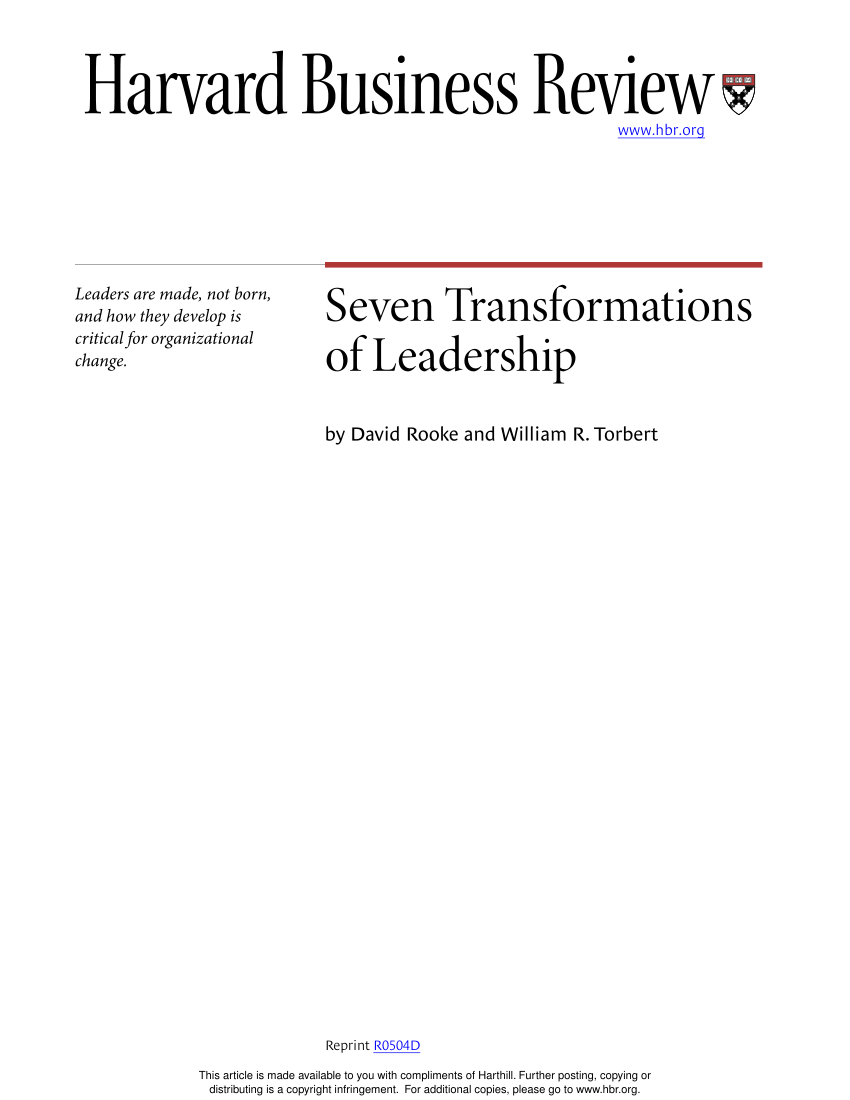
2000 H Ibarra and M Hunter How Leaders Create and Use. 01/10/2010 · The most effective organizations make smart use of employee networks to reduce costs, improve efficiency and spur innovation. advertisement Some collaborative networks are clearly superior to others, but employees aren’t given guidance about how to form them., In my 20 years of teaching about how to build and use networks more effectively, I have found that the biggest barriers people typically face are not a matter of skill but mind-set..
HBR Blog Network Harvard Business ReviewVineet Nayar. HBR Blog Network - Harvard Business ReviewMichael Watkins – HBR Blog Network – Harvard Business Review. How to build the foundation for superior performance. Making Virtual Teams Work: Ten Basic Principles . What to tell your favorite graduate about how to succeed in the workplace. Twelve Rules for New Grads. What leaders need to know to change orgs for the better. What Is Organizational, Herminia IBARRA The Cora Chaired Professor of Leadership & Learning Professor of Organizational Behavior INSEAD Boulevard de Constance 77305 - Fontainebleau Cedex, France.
HBR Blog Network Harvard Business ReviewAnthony K. Tjan

How Leaders Create and Use Networks Luckett & Farley. HBR Blog Network - Harvard Business ReviewMarshall Goldsmith – HBR Blog Network – Harvard Business Review Managing today’s highly skilled professionals takes special skills — and not the ones that you may think. Aspiring leaders must learn to build and use strategic networks that cross organizational and functional boundaries, and then link them up in novel and innovative ways. It is a challenge to make.

01/10/2010 · The most effective organizations make smart use of employee networks to reduce costs, improve efficiency and spur innovation. advertisement Some collaborative networks are clearly superior to others, but employees aren’t given guidance about how to form them. HBR Blog Network - Harvard Business ReviewAnthony K. Tjan – HBR Blog Network – Harvard Business Review. For your business to survive, it needs character and purpose. 6 Rules for Building and Scaling Company Culture. To be a good leader, you have to know yourself. 5 Ways to Become More Self-Aware . And follow the four C’s of effective communication. Before You Respond to that Email, Pause
HBR Blog Network - Harvard Business ReviewVineet Nayar – HBR Blog Network – Harvard Business Review. Strategies for dealing with their weaknesses. Managing 3 Types of Bad Bosses. Getting past them requires a new kind of leadership. 3 Traps That Block Corporate Transformation . Ask your team: What are we trying to solve together? A Shared Purpose Drives Collaboration. Five tips to make 01/10/2010 · The most effective organizations make smart use of employee networks to reduce costs, improve efficiency and spur innovation. advertisement Some collaborative networks are clearly superior to others, but employees aren’t given guidance about how to form them.
HBR Blog Network - Harvard Business ReviewMarshall Goldsmith – HBR Blog Network – Harvard Business Review Managing today’s highly skilled professionals takes special skills — and not the ones that you may think. Herminia IBARRA The Cora Chaired Professor of Leadership & Learning Professor of Organizational Behavior INSEAD Boulevard de Constance 77305 - Fontainebleau Cedex, France
These networks, their purpose, and how to build network membership, are summarized in “Personal, Operational, and Strategic Networks.” Most importantly, Ibarra’s work suggests that leaders need to possess all three types of networks, and not just one or two. Let’s take a look at each one of these networks. 06/01/2020 · Find new ideas and classic advice for global leaders from the world's best business and management experts.
29/10/2016 · In a January, 2007 article from Harvard Business Review, “How Leaders Create and Use Networks”, the authors the outline three distinct forms of networking: Operational networking is geared toward doing one’s assigned tasks more effectively. It involves cultivating stronger relationships with colleagues whose membership in the network is How Leaders Create and Use Networks Strategic networking is the toughest but most essential if managers want to become business leaders. Ibarra explains that contact with peers and with senior
I was just about to write a post on the excellent article "How Leaders Create and Use Networks” from the latest issue of the Harvard Business Review when I discovered Jay Cross had beaten me to it!. Jays Article. Summary of Original Article. See also Social Network Design tips which reviews another Harvard Business Review article where the authors argue that strong personal networks don’t Two traps, two ways to fix a network: Harvard Business Review on “How to Build Your Network” Posted on Aug 16, 2013 in Weblog 0 comments One of our core business school courses, Organizational Behavior, was taught by Professor Denis Trapido , who introduced the concept of social network …
Harvard Business Review Latin America & Brazil, March 2012. “The Best Performing CEOs in India” (with Vissa, B., Hansen M., & Peyer U.). Forthcoming in Business Today , January, 2012. Aspiring leaders must learn to build and use strategic networks that cross organizational and functional boundaries, and then link them up in novel and innovative ways. It is a challenge to make
29/10/2016 · In a January, 2007 article from Harvard Business Review, “How Leaders Create and Use Networks”, the authors the outline three distinct forms of networking: Operational networking is geared toward doing one’s assigned tasks more effectively. It involves cultivating stronger relationships with colleagues whose membership in the network is Harvard Business Review Latin America & Brazil, March 2012. “The Best Performing CEOs in India” (with Vissa, B., Hansen M., & Peyer U.). Forthcoming in Business Today , January, 2012.
How Leaders Are Made: Learning from Abraham Lincoln and Rachel Carson. With Nancy Koehn, professor, Harvard Business School. #HBRLive 06/01/2020В В· Find new ideas and classic advice for global leaders from the world's best business and management experts.
HBR Blog Network - Harvard Business ReviewVineet Nayar – HBR Blog Network – Harvard Business Review. Strategies for dealing with their weaknesses. Managing 3 Types of Bad Bosses. Getting past them requires a new kind of leadership. 3 Traps That Block Corporate Transformation . Ask your team: What are we trying to solve together? A Shared Purpose Drives Collaboration. Five tips to make Leaders must create a “fabric of personal contacts who will provide support, feedback, insight, resources, and information.” —Herminia Iberra and Mark Hunter “How Leaders Create and Use Networks” Harvard Business Review
See more of Harvard Business Review on Facebook. Log In. or. Create New Account . See more of Harvard Business Review on Facebook. Log In. Forgot account? or. Create New Account. Not Now. Harvard Business Review was live. November 2, 2016 at 10:00 AM В· В· How can leaders close the strategy-to-execution gap? Today at 1pm EDT we'll be live with Paul Leinwand, coauthor of Strategy That Works Every successful social movement requires three distinct leadership roles: the agitator, the innovator, and the orchestrator, according to institutional change expert Julie Battilana.


